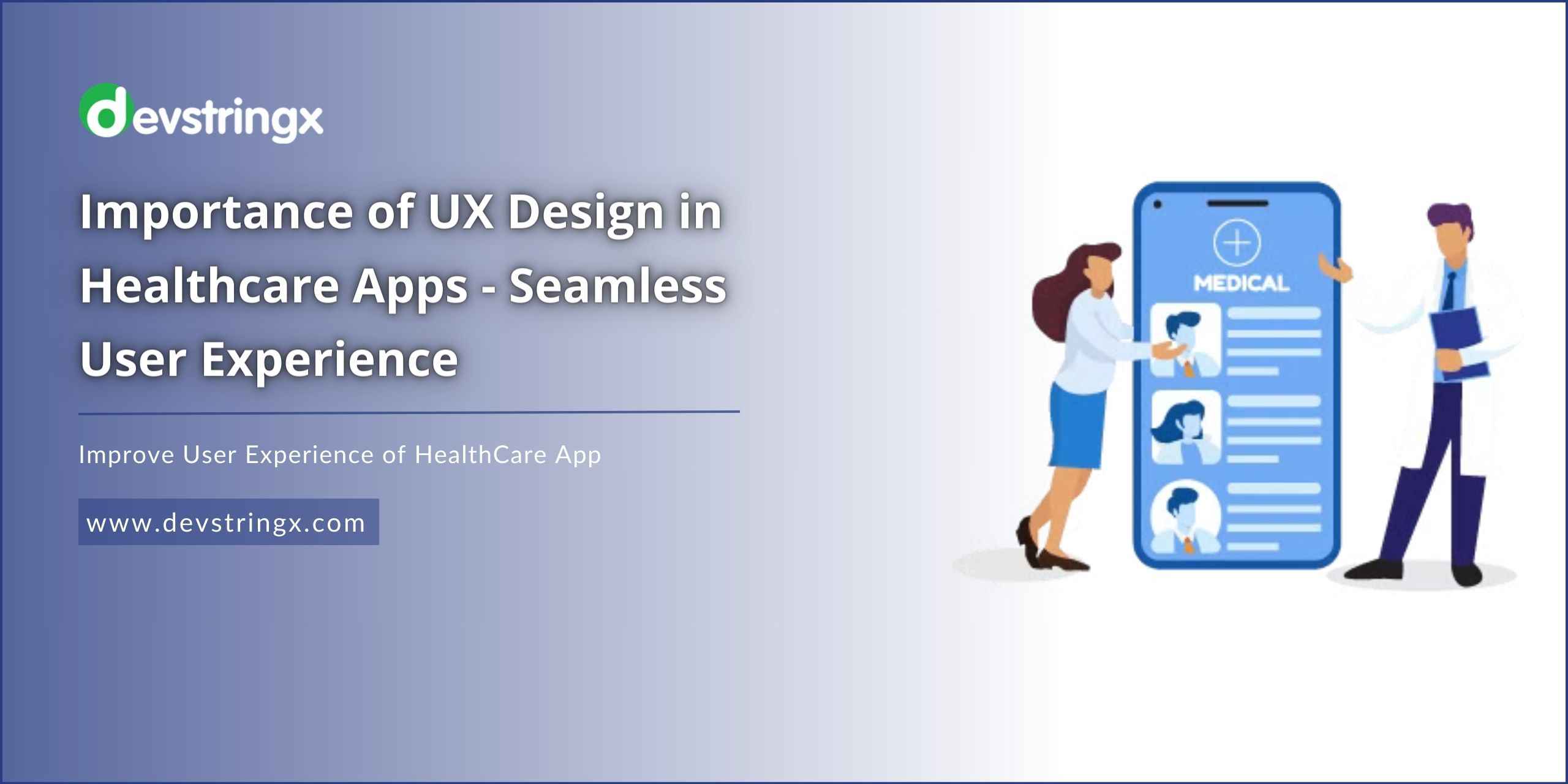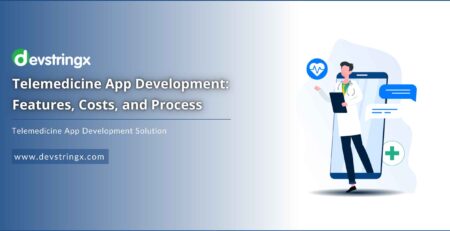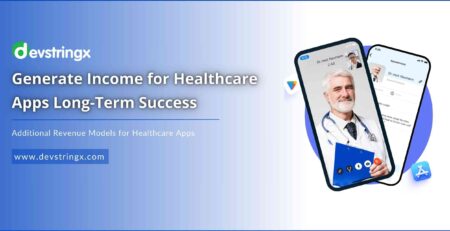Seamless Experience: The Importance of UX Design in Healthcare Apps – DS
The integration of technology in healthcare through mobile applications has been a game-changer in the way healthcare services are accessed and delivered. At the heart of these advancements lies User Experience (UX) Design, a crucial component that can make or break the effectiveness of healthcare apps. By successfully integrating UX principles, healthcare apps can significantly enhance the quality of care, streamline the delivery of services, and provide users with tools that are not only functional but also empathetic to their health journeys.
The impact of well-designed UX in healthcare technology extends beyond individual patient experiences, contributing to the broader goals of healthcare systems in improving efficiency, reducing costs, and elevating the standard of care. This comprehensive analysis explores the multifaceted role of UX design in healthcare applications and its profound impact on patient care, professional efficiency, and overall health outcomes.
The Importance of UX Design in Healthcare Apps
UX design in healthcare goes beyond mere functionality; it involves creating an intuitive, user-friendly interface that can be easily navigated by people of all ages and abilities. It’s about understanding the user’s journey from their perspective, identifying pain points, and providing solutions that enhance their experience. The design must be empathetic, considering the emotional and physical state of users, especially when dealing with sensitive health issues. By prioritizing UX design, healthcare apps can achieve higher engagement rates, reduce errors, and foster a sense of empowerment among users, ultimately leading to improved health outcomes and patient satisfaction.
1) User-Centric Design for Diverse Users
Healthcare apps serve a wide array of users including patients with varying health conditions, healthcare professionals with different specialties, and administrative staff dealing with data management. Effective UX design must cater to this diversity by offering tailored interfaces and functionalities. For example, a patient managing diabetes might need a simple interface for tracking blood sugar levels, while a doctor might need quick access to detailed patient histories.
2) Simplifying Complex Medical Information
The healthcare sector is often characterized by complex information and data. A well-thought-out UX design simplifies this complexity, presenting medical information in an easily digestible and understandable format. This is crucial for patient education, enabling users to grasp their health conditions and treatment plans better, which in turn fosters improved patient engagement and adherence to medical advice.
3) Enhance Accessibility
Accessibility is a fundamental aspect of UX design, especially crucial in healthcare apps where users may include the elderly or individuals with physical or cognitive disabilities. UX designers must ensure apps are navigable and understandable for all users, incorporating features such as voice commands, large buttons, adjustable text sizes, and color contrast options. Additionally, UX designers must consider language barriers and cultural differences, incorporating multilingual support and culturally sensitive content to make healthcare apps truly inclusive.
4) Encouraging Proactive Healthcare Management
High-quality UX design in healthcare apps can encourage users to take a proactive approach to managing their health. Features such as symptom trackers, medication reminders, and options for teleconsultations not only improve individual health outcomes but also help reduce the overall burden on healthcare systems by minimizing unnecessary hospital visits. Furthermore, by integrating predictive analytics and personalized health insights, UX design can empower users to make informed decisions about their health before issues become critical. This proactive approach, enabled by intuitive and user-friendly design, not only enhances individual wellness but also contributes to a more efficient and cost-effective healthcare system.
5) Building Trust through Privacy and Security
In an era of increasing digital threats, trust is paramount, especially when dealing with sensitive personal health information. UX design plays a vital role in ensuring data security and privacy. Clear data usage policies, secure login mechanisms, and explicit consent forms are essential UX elements that build user trust and ensure compliance with legal standards like HIPAA. This focus on security and privacy within the UX design not only protects users’ confidential information but also fosters a safe digital environment, encouraging more people to confidently use and benefit from digital healthcare services.
Good to Read- How Much does Mobile App Development Costs in India 2024?
6) Reducing Cognitive Load for Healthcare Professionals
Healthcare professionals often operate under time constraints and high-pressure conditions. Efficient UX design in healthcare apps can significantly reduce their cognitive load, allowing them to focus more on patient care rather than on navigating complex software interfaces. Intuitive design, streamlined workflows, and seamless integration with existing healthcare systems are key to achieving this. By doing so, UX design not only enhances the efficiency of healthcare professionals but also improves the accuracy and speed of medical services, ultimately benefiting patient care and healthcare outcomes.
7) Facilitating Patient-Doctor Communication
Effective communication between patients and doctors is a cornerstone of quality healthcare. UX design enhances this by providing platforms for secure messaging, easy sharing of medical records, and convenient scheduling of appointments. These features ensure that communication is not only efficient but also maintains the confidentiality of health information. In addition, well-designed UX can facilitate more nuanced interactions, like video consultations and real-time health monitoring, which can be critical for remote or telehealth services. These advancements in communication foster a deeper connection between patients and healthcare providers, leading to more personalized care and better health outcomes.
8) Adapting to Technological Advancements
As healthcare technology advances, UX designers must be adept at integrating complex features such as predictive analytics and personalized health recommendations into the user interface in a way that feels natural and easy to understand. This adaptability in UX design is crucial for bridging the gap between sophisticated healthcare technologies and user-friendly experiences, ultimately enabling patients and healthcare providers to harness the full potential of digital health advancements.
9) Supporting Decision Making
Healthcare apps can play a pivotal role in supporting the decision-making process for both patients and professionals. Through a user-centric UX design, these apps can present relevant information, suggest actions based on user inputs, and provide easy access to resources and guidelines, aiding in informed decision-making. Moreover, by incorporating elements like interactive decision trees and personalized health dashboards, healthcare apps can further enhance the decision-making process, making it more interactive and tailored to individual needs.
10) Continuous Improvement through User Feedback
An effective UX design is iterative and evolves based on user feedback. Incorporating mechanisms for collecting and analyzing feedback within the app allows designers and developers to continually refine and enhance the user experience, ensuring that the app remains relevant and effective over time. This ongoing process of refinement allows the integration of new features and improvements in response to real-world user experiences, thereby maintaining the app’s relevance and effectiveness in a constantly evolving healthcare landscape.
Good to Read:- Outstanding Mobile App Development Companies in Noida
Conclusion
The significance of UX design in healthcare apps is immense and multifaceted. It goes beyond aesthetics to ensure functionality, accessibility, security, and effectiveness in enhancing healthcare delivery. As digital health continues to evolve, the focus on user experience will remain a critical factor in the success of healthcare applications. By prioritizing user experience, healthcare apps can transform the way patients and professionals interact with healthcare services, making the journey towards health and wellness not just effective but also intuitive and user-friendly.
In conclusion, UX design in healthcare apps is a dynamic field that significantly influences user satisfaction, engagement, and overall health outcomes. By placing the user at the center of design and development, healthcare apps can revolutionize the way healthcare app development services are accessed and delivered, paving the way for a more efficient, accessible, and patient-centric healthcare ecosystem.














